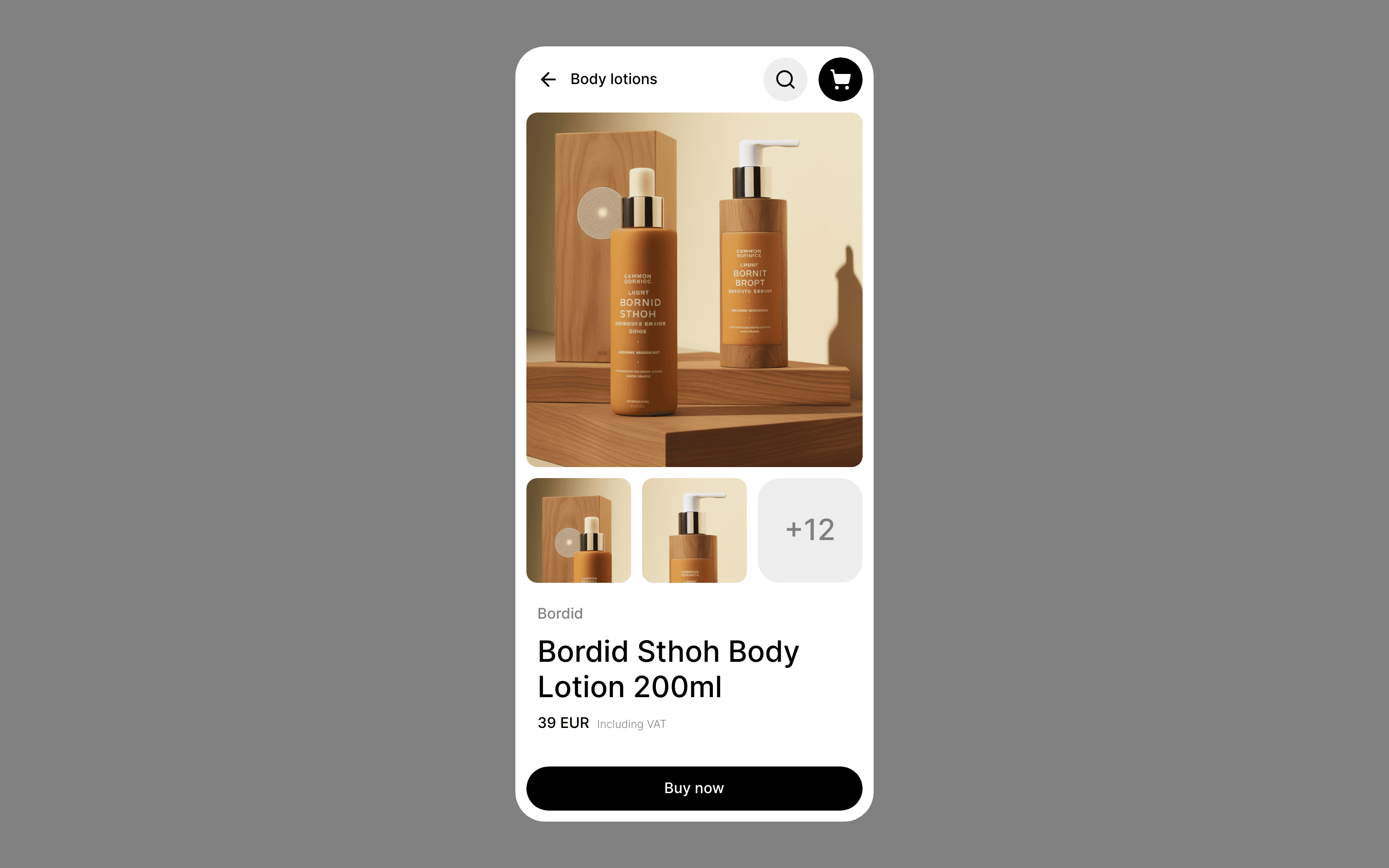Build Design Systems With Penpot Components
Penpot's new component system for building scalable design systems, emphasizing designer-developer collaboration.

uxdesign.cc – User Experience Design — Medium | Rachit Gupta
All the swag you need
I did this design challenge for Yelp’s Design team. Solving an open ended problem such as this one feels like an open canvas since you tend to have little-to-no insight into data points and user behavior.
I wanted to share my process and outcome with anyone going through interviews and is going to encounter similar open-ended design problems.
Time spent: 45 mins on research and planning, 3 hours on product search page and detail pages (including prototyping), 45 minutes documenting and submitting.
Roles assumed: IxD, visuals and a bit of user research.
Tools used: Sketch and Principle for Mac.
—
Create an e-commerce product detail and search experience for Yelp’s Swag Store.
I was provided with a list of necessary product details to be surfaced in the designs. A generic product consisting of those details looks like this:
Generic product with essential details
The experience you create needs to be optimized towards getting the users into the purchase funnel.
It all started with this Google search
In order to gain a deeper understanding of the problem and mobile e-commerce, I started off by reading a few articles about:
Conclusion: Avoid confusion
So given the components of the item and scope of this case study, our high level goal is to eliminate the problems such as complex navigation, poor loading time and poor usability.
In the next section, let’s define clear goals, scope and design principles we can adhere to.
—
The scope which we are solving for here is “Search → Details”
Since we are aiming for conversion, I assumed a few business goals while brainstorming:
While researching and learning more about conversion, I identified a few design principles which served essential during decision making.
Type of shopper v/s what colors are they attracted to. Yelp Swag Store falls in the traditional buying category.
Principle 1: Less is more
Minimal and digestible content which is relevant and contextual.
Principle 2: Clear way to move forward
Visible and actionable calls-to-actions at all points in the journey.
Principle 3: Keep users engaged
Provide high quality and relevant content.
Principle 4: Build trust
Surface reviews and make them dependable.
Principle 5: Do the work for the user
Pre-select options for the user by predicting what they might select (anticipatory design).
Principle 6: Urgency
Create urgency for the user by using tools like promotions, offer deadlines and so on.
—
User is looking for a specific product on Yelp Swag Store and searches for it.
The first step in solving a problem with existing solutions should always be about exploring the domain and gather ‘goods’ and ‘bads’. For this challenge, I spent 15 minutes capturing three different categories of mobile web stores’ ‘search result’ pages.
Captured screenshots from here
Next step, after understanding how other websites are handling similar problems was to explore different solutions. Referring back to our design principles and given information about product details, here is a sneak peak of what I came up with:
I separated the page into modules and explored a few variations of each
The ones with a green smiley were the ones which I wanted to explore further in Sketch. Next step was to fire up Sketch and start putting together visuals.
I put together four screens explaining the search and long-press concept and then created a prototype to showcase how it will behave.
Our goal at search level is to make the user add it to cart and continue browsing.
—
User is browsing details for a product he is interested in.
I picked out a few product page screenshots and started ideating.
In contrast to product search, I did a quick exploration (20 mins) within Sketch while still referring to the above competitive audit.
System for the proposed product page
—
I got really into it when I started researching on conversion and user behavior. There is a lot to digest. There are a ton of resources available to learn about buying experience vs user behavior. I limited myself to a few constraints and assumptions which helped me converge.
I brainstormed using paper, used Principle for prototyping and Sketch for visuals. I did this exercise in one sitting. I feel I could change that. Only because I feel solving something like this needs breaks in between and you need to come back with a fresh mind to think deeper and broader. The end result could still be made minimal (It still is text heavy).
And that’s a wrap! More about me here: http://ift.tt/2mqbfEw
Designing for mobile e-Commerce — a UX design challenge from Yelp was originally published in uxdesign.cc – User Experience Design on Medium, where people are continuing the conversation by highlighting and responding to this story.
AI-driven updates, curated by humans and hand-edited for the Prototypr community